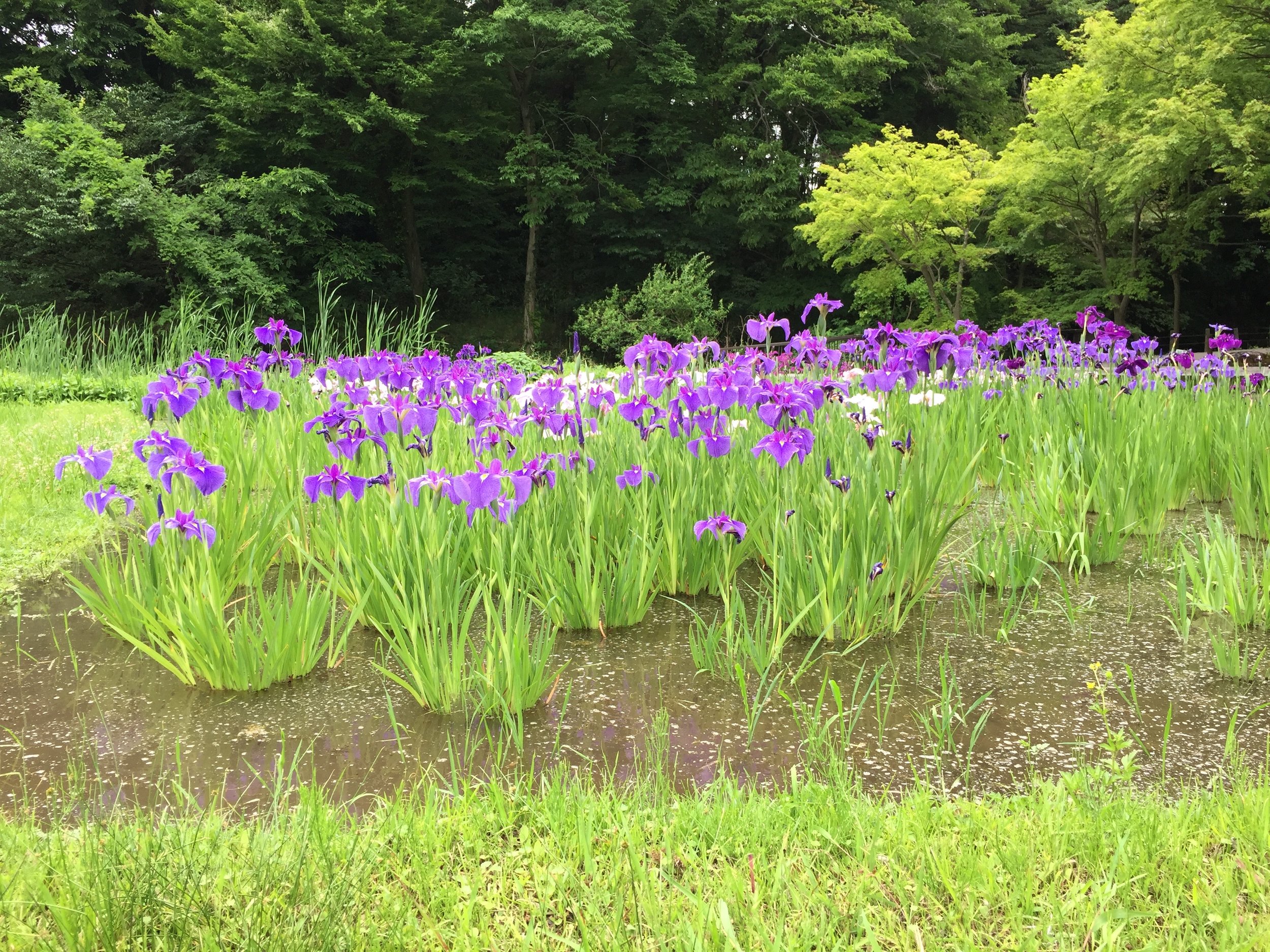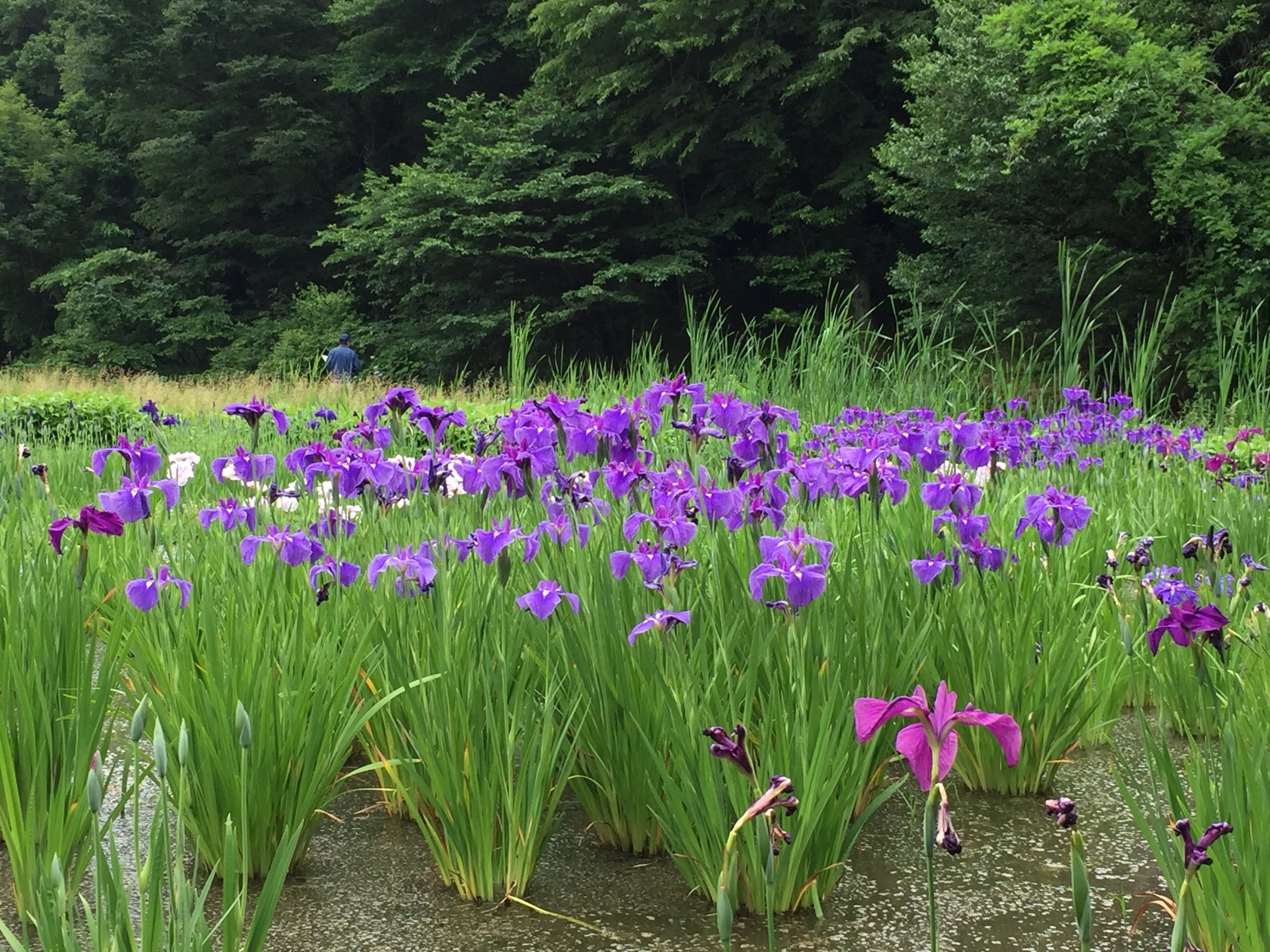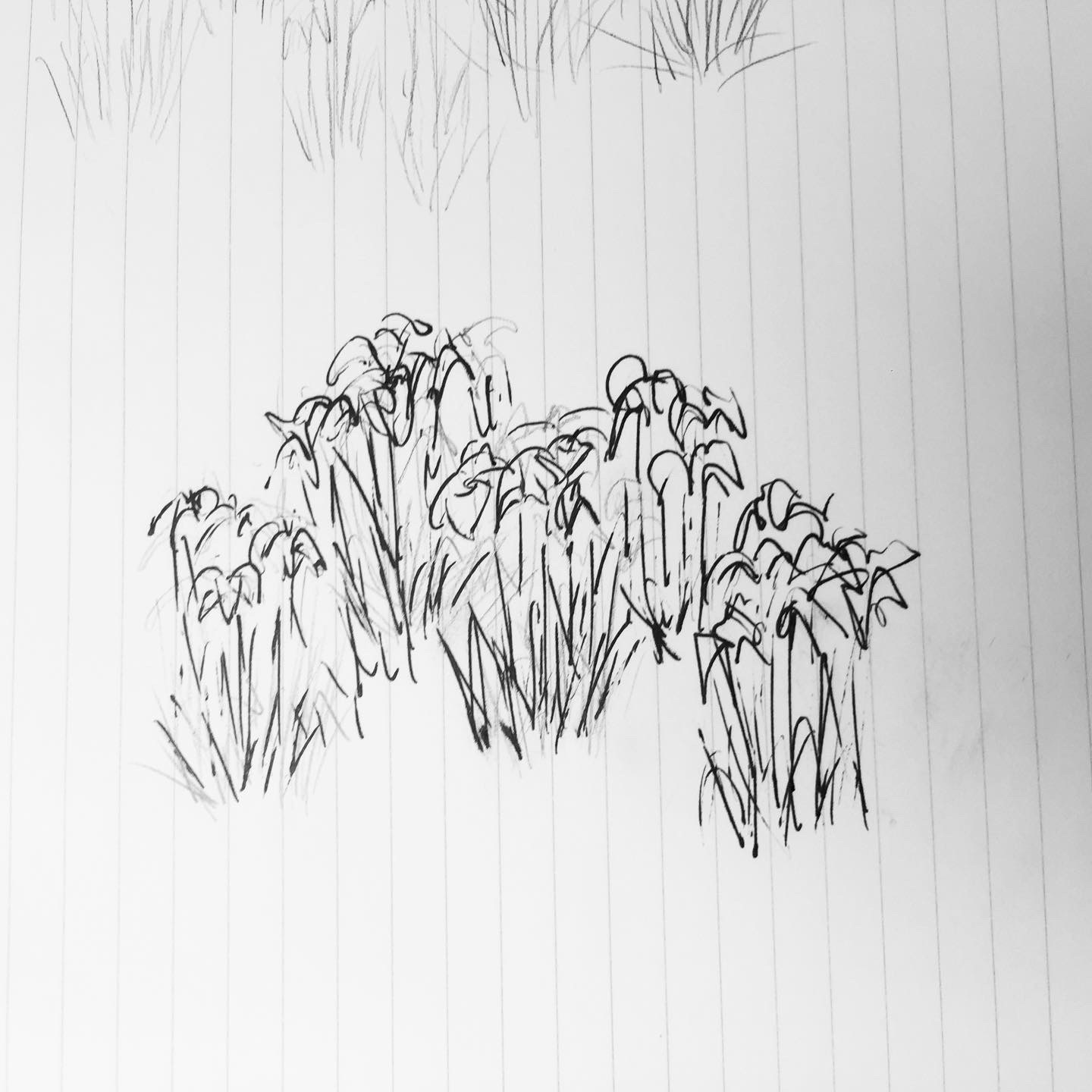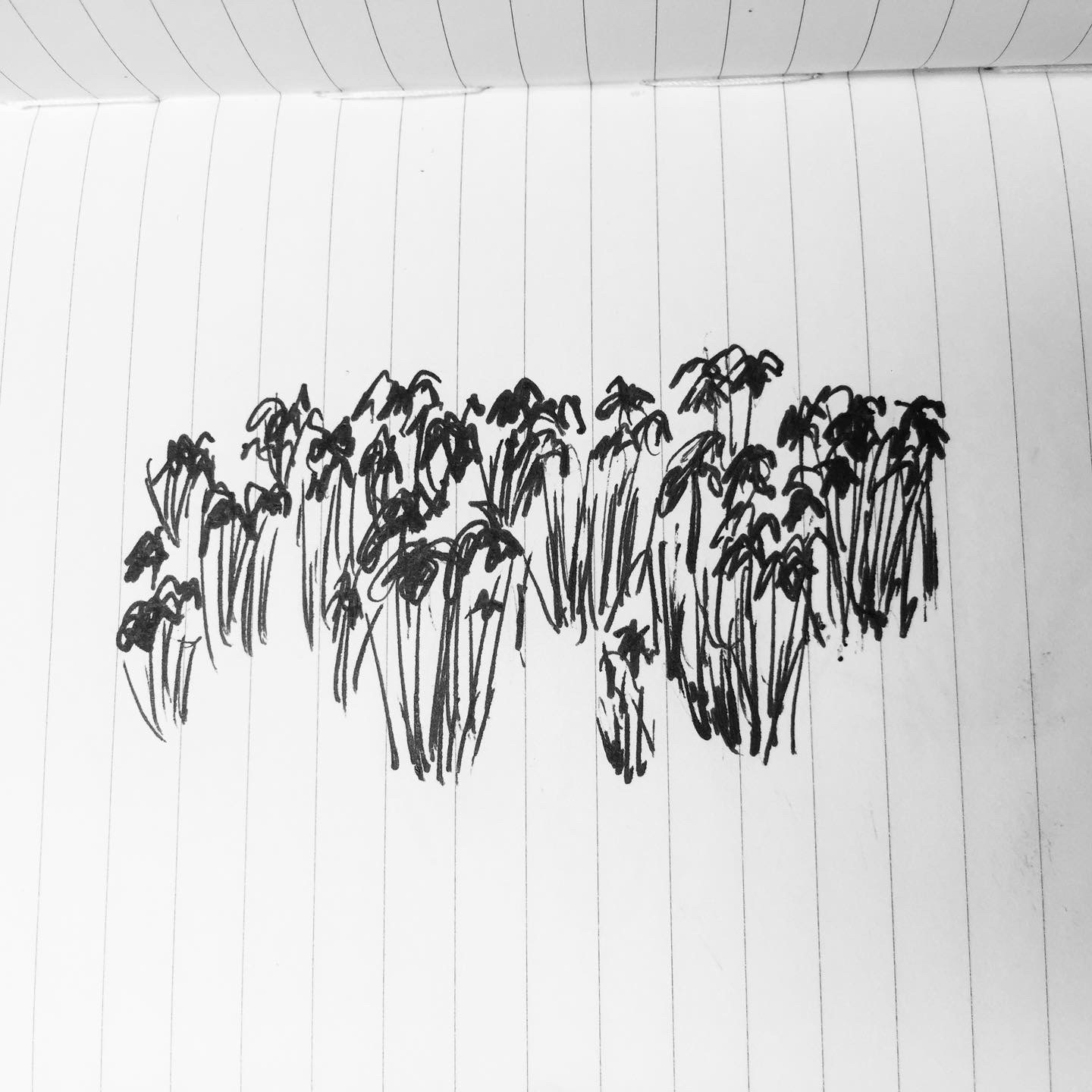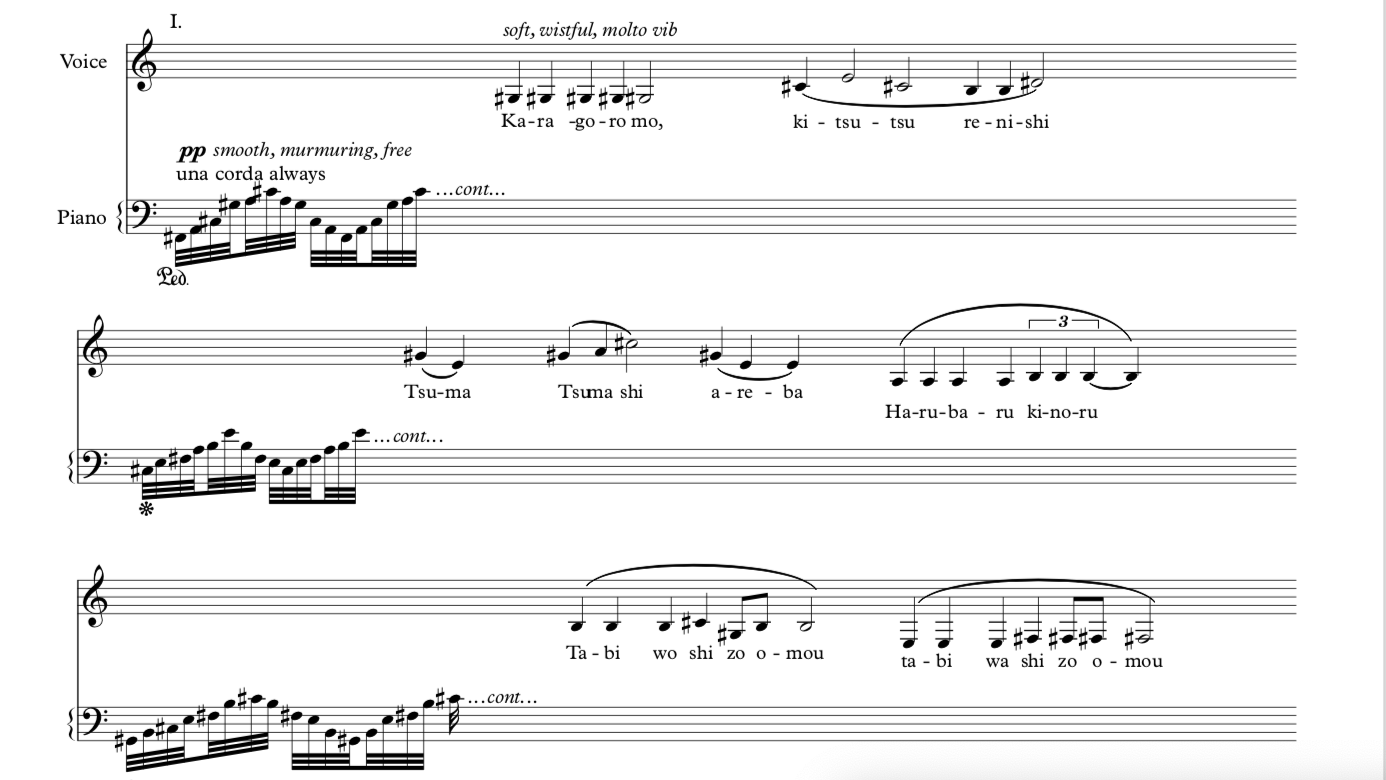Kakitsubata (カキツバタ), Music, Art and Longing
May – between the cherry blossoms departing and summer arriving – is the month to see kakitsubata, Japanese irises bloom.
Kakitsubata at Jindaiji Botanic Gardens
These striking purple flowers permeate Japanese art and literature as symbols of longing, loss, beauty and the power of art. The short mugen noh Kakitsubata revolves around the below poem from the Heian Period (c980) Ise Monogatari (伊勢物語 – Tales of Ise) in which the central character Ariwara no Narihara rests beside the famous Mikawa iris marches and is reminded of his wife, whom he left far behind.
から衣 きつゝなれにし つましあれば はるばるきぬる たびをしぞ思
Karagoromo / kitsutsu narenishi / tsuma shi areba / harubaru kinuru / tabi o shi zo omou
I left my wife in Kyoto, who is as suited to me as a karakoromo attire which is repeatedly worn and softened. Sadness and loneliness soak my heart in thinking of the long way I traveled .
(translation via the-noh.com)
It is a beautifully constructed poem, in which the first syllable of each line makes the word ‘kakitsubata’, and the last of each an old word for ‘beautiful’ (‘麗しも). In the poem as in the noh – in which the spirit of the flowers tell Narihara that his words can bring salvation to all beings, including plants – imagery, symbology, philosophy, love and beauty are embodied in a few gestures, a few short lines.
Ogata Korin – Irises
The poem and the imagery of the Mikawa iris fields is also the subject of Ogata Kōrin’s famous folding screens (c1705), of undulating fields of blue irises on a shimmering gold background. The later Irises at Yatsuhashi (Eight Bridges) also has the addition of sharp-angled bridges contrasting the flowing lines of the flowers.
The Tale of Ise poem formed the heart of the short piece Water Iris, written for Michelle O’Rourke and Michael McHale in 2017, a work that explores these ideas of love, loss and longing, along with short texts from Emily Dickinson and Percy Bysshe Shelley (below). Each text deals with memory and longing:
II.
My thoughts arise and fade in solitude,
The verse that would invest them melts away
Like moonlight in the heaven of spreading day;
How beautiful the were, how firm they stood,
Flecking the starry sky like woven pearl
(Shelley)
III.
To flee from memory
Had we the wings
Many would fly
Inured to slower things.
Birds with surprise
Would scan the cowering van
Of men escaping
From the mind of man
(Dickinson)
In creating the piece I too wanted to find a way to bring imagery, sound, and idea together. I spent time with the noh, and there are some nods to noh vocal gestures in the voice, and also with Kōrin’s panels, trying to capture their shape, flow and movement – an undulating piano base with the rich vocal statements floating on top.
The poems also found their own cross-connections: My rough sketches of the flowers also revealed an echo of the shape of a bird in flight, in all three are images of water and of the shimmering heavens, of things difficult to grasp, of regret.
The relationship between nature and humanity, however rich the artistry or good the intention, in each is also neither one-way or simple, an uneasiness that solidifies emerges when reading through all three poems in sequence. This complexity was well-captured by Mark Cody Poulton in his article The Language of Flowers in the Nō Theatre (Japan Review No. 8, 1997): ‘
‘Before our eyes the lowly flower is transformed into several human characters, then finally into something altogether supernatural. Both poetry and scripture are employed here as vehicles of salvation…
…the buddhahood of plants in the Nō plays is essentially a form of domestication and acculturation of wild nature…This is not to deny, however, humanity’s obligation to align itself with natural processes. Both heart and flower must go out to meet each other for there to be any communication between them.’
Plus bonus kakitsubata – a growing field of digital irises at the TeamLAB Borderless digital art museum.


